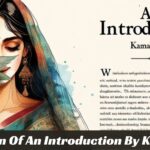I. A. Richards is a psychological critic of the modern world. He has been greatly influenced by the works of Freud, Adler and Jung. He believes in psycho-analysis of the mind of the literary artist at the time of creation and of the readers at the time of reading a work of literature. According to Richards all art is the medium of expression. Music is an art because through the medium of music, a musician expresses his feelings and emotions. In case of a musician, the medium of expression is sound. Painting is also an art. A painter communicates his feelings and experiences through the medium colour and brush. In the same way a literary artist takes the help of words in order to express his feelings and experiences. Thus, art is supreme form of communicative activity. The business of a literary critic according to Richards, is to examine how communication takes from the literary artist to the readers. A Literary critic also examines how the mind of a literary artist operates at the time of creation and the mind of the reader works at the time of reading the works of literature.
In order to determine the nature of poetry Richard first examines the working of the human mind, which, according to him is “a system of impulses. Impulses may be defined as the reactions produced in the end by some stimulus and culminating in an act. Until the stage of action arrives they pull in different directions, each pressing the others to act in the way suited to it. The mind experiences a state of poise only when they organize to follow a common course. With each new experience, however, they are disturbed and remain so until they have readjusted themselves into a new poise, with the result that the mind remains in a disturbed state. The ideal state of poise is one in which all the impulses are able to satisfy themselves to the full when stirred into activity by some stimulus, but as this is seldom possible, the maximum satisfaction of the maximum number of impulses, with the minimum frustration to the rest is all that can be hoped for.
Richards also considers the value of experience or state of mind. Experiences are naturally both good and bad. It is only the good ones that can be said to be valuable. It has been already pointed out that an experience results from the play of impulses. The mind is ever engaged in the unconscious process of reconciling their conflicting claims in such a way “that success is obtained for the greater number or mass of them, for the most important and the weightiest set.” Richards divides impulses into two kinds: “appetencies and aversions”, in plain words desires and dislikes. Appetency refers to unconscious impulse. Richards comes to the conclusion that “anyone will actually prefer to satisfy a greater number of equal appetencies rather than a less.
The mind instinctively prefers the satisfaction of appetencies to the satisfaction of aversions, and as some appetencies are more important than others it seeks their satisfaction first. It prefers elevating those appetencies, which have importance in life to those that are depriving. The “normal satisfaction of impulses” writes L.A. Richards, therefore, is involved in almost all the greatest good of life.”
Also Read :
- Compare Hamlet with Macbeth, Othello and other Tragedies
- “The Pardoner’s Tale” is the finest tale of Chaucer
- Prologue to Canterbury Tales – (Short Ques & Ans)
- Confessional Poetry – Definition & meaning
- Line By Line Explanation Of The Poem The Eve of St. Agnes
Besides poetry, the great art, according to Richards, is that which increases men’s happiness, to the redemption of the oppressed, or to the enlargement of our sympathies with each other, or to vitalize our soul and outlook.
Richards also refutes the Art for Art’s sake theory. He remarks that of all the great critical doctrines, the ‘moral’ theory of art has the most great minds behind it. Replying tot he question “Should poetry be for poetry’s sake”, he writes: “What then does the formula “Poetry for poetry’s sake tell us about this formula. It says, as I understand it, these things.
Richards explains his meaning more clearly by pointing out the different sense in which the word Truth is used. A reference is true in the scientific sense. when the things to which it refers are actually, together in the way in which it refers to them. Otherwise it is false. But truth is very little used in this sense in artistic pretions. In art the most usual sense in which this word is used is acceptability. The Truth o Robinson Crusoe is the acceptability of things we are told, their acceptability in the interests of the narrative, not their correspondence with any actual facts involving Alexander Selkirk or another. Similarly the falsity of happy endings to Lear or Don Quixote, is their failure to be acceptable (true) to those who have fully responded to the rest of the work. It is in this sense that Truth is equivalent to “internal necessity” or rightness. That is true or internally necessary, which cooperates to arouse our ordered response. It is in this sense that Keats used the word Truth, when he said “What the Imagination seizes as Beauty must be Truth.”
The poet uses words emotively for the purpose of evoking an emotion or the attitude of mind which the poet considers valuable but for which there ae no verbal equivalents. So he adopts this indirect method of evoking it, neither caring for the literal meaning of words nor for their logical sequence-both defects in the scientific use of words. Poetry speaks not to the mind but to the impulses; and its speech, literal or unliteral, logical or illogical, is faithful to its experience to the extent to which it induces a like experience in others.
Richards has been a very powerful influence on modern literary criticism. His “Principles of Literary Criticism” is a great work. It has been described “to be a machine to think with.” In this book. Richard has formulated his theories and principles of literary criticism. The second important book of Richards in the field of English literary criticism is “Meaning of Meaning” In this book. Richards has emphasised the importance of semantics for the study of poetry. According to him, the business of literary critic is to explain to the readers, the meaning and behaviour of words. The third important book of Richards in the field of literary criticism is “Science And Poetry”. In this book Richards formulates his theory of language. As he points out, thee are two uses of language- *scientific use of language and emotive use of language. The language used in the works of science is the language of statement. It is matter of fact language. On the other hand the language used in poetry is emotive. We can say that while the language used in science-states, the language used in poetry suggests.
Practical Criticism of Richards had brought about revolution in the field of English literary criticism. Richards wrote this book when he was professor of English Literature in Cambridge University. In this book, he teaches us the method of textual analysis in the study of poetry. According to him the attention of student of poetry should be fixed not on the study of the poet. On the other hand it should be developed to the study of poetry. The main concern of a student of poetry is the study of the meaning and behaviour of words. Naturally, he should analyse the poem word by word line by line and stanza by stanza. Then alone he will be able to bring out the meaning of the poem to the readers. Thus, Practical Criticism of Richards has exerted tremendous influence on modern literary criticism.
The above examination shows the importance of Richards in the field of modern literary criticism. Richards is an original critic. He has been a source of inspiration to critics like William Empson, Allen Tate. John Crow Ransom and others.
I.A. Richards’ Principles of Literary Criticism (1924) and Practical Criticism (1929) has pointed to a more subtle and a more philosophical approach to literature as an art. Much emphasis was placed upon the language of poetry, its structure and texture.
PLEASE HELP ME TO REACH 1000 SUBSCRIBER ON MY COOKING YT CHANNEL (CLICK HERE)











